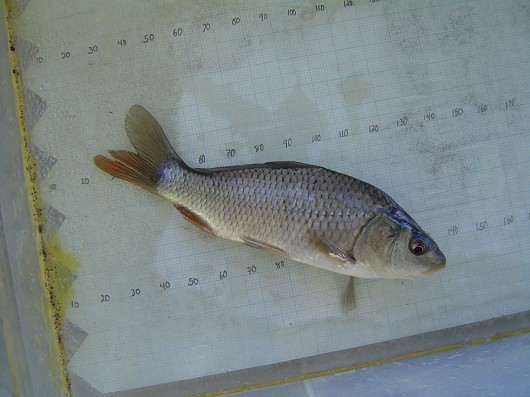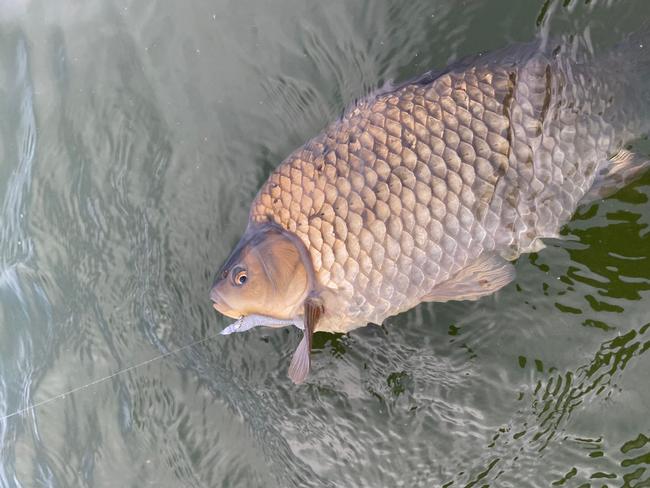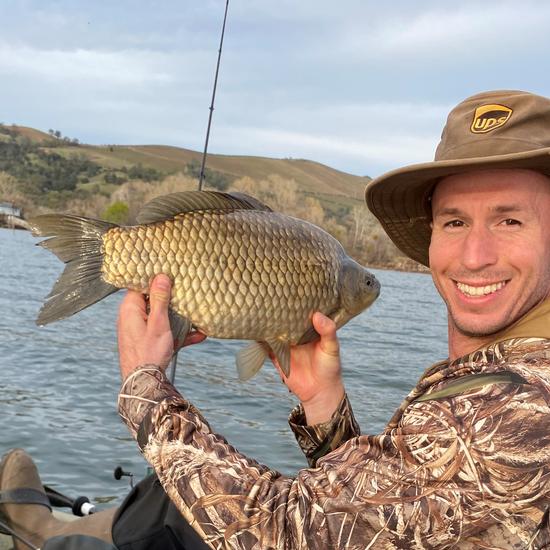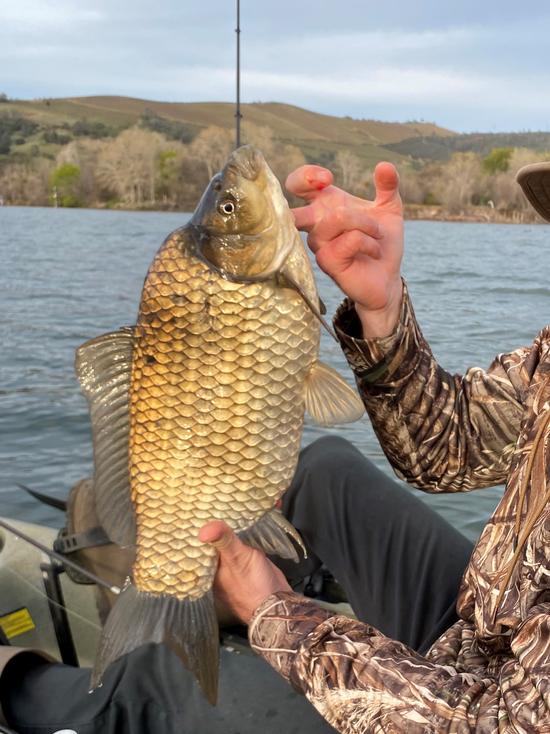Goldfish
-
Scientific NameCarassius auratus
-
NativeNo
-
Identification
 Goldfish, captured in rotary screw trap on Sacramento River at Knight's Landing. Date: January 2009. Photo by Dan Worth, California Department of Fish and Game.
Goldfish, captured in rotary screw trap on Sacramento River at Knight's Landing. Date: January 2009. Photo by Dan Worth, California Department of Fish and Game. Goldfish (Carassius auratus) from Clear Lake, CA. 2022. Photo and fish by Carson Riley
Goldfish (Carassius auratus) from Clear Lake, CA. 2022. Photo and fish by Carson Riley Goldfish (Carassius auratus) from Clear Lake, CA. 2022. Photo and fish by Carson Riley
Goldfish (Carassius auratus) from Clear Lake, CA. 2022. Photo and fish by Carson Riley Goldfish (Carassius auratus) from Clear Lake, CA. 2022. Photo and fish by Carson Riley
Goldfish (Carassius auratus) from Clear Lake, CA. 2022. Photo and fish by Carson Riley- Deep, heavy body with a rounded belly
- Can vary greatly in color but are most commonly olive on their back, silvery to shiny bronze on their sides, white to yellow on their belly, and dusky on the fins
- 15-21 dorsal, and 5-6 anal fin rays
- First three dorsal rays are hardened into serrated spines
- 25-31 large scales on the lateral line
- Breeding males develop small tubercles on the sides of their head and pectoral fins
-
Life History
Goldfish, most commonly thought of as a fishbowl species, are also found in wild populations mainly in fertile farm and small backyard ponds, warm water reservoirs, sloughs with heavy vegetation, and areas that are heavily disturbed or polluted. While they can physically withstand temperatures as low as freezing and as high as 41°C they are only naturally found in waters between 27°C and 37°C with mild winters. Occasionally populations become established in cold oligotrophic lakes but only if there is a large, warm littoral area available for breeding. It is rare to find Goldfish in streams but some will inhabit deep riverine pools below reservoirs if there is abundant plant cover or high turbidity levels. Goldfish use their long intestine to feed heavily on difficult-to-digest algae and organic detritus, but will also catch zooplankton and aquatic macrophytes. Young Goldfish feed more on zooplankton and will also include aquatic insects in their diet.
Goldfish reach sexual maturity by at least age 3 or 4, with most males becoming mature between ages 2 and 3. In order for spawning to occur water temperatures must be between 16°C and 26°C. Outside of this range, development of both adult gonads and fertilized embryos will be impaired. In California this period will begin in April or May and mating occurs around dawn on sunny days. A male will follow behind a female as she swims and fertilize the eggs as soon as they are released. These fertilized eggs then attach to the vegetation, roots, or other submerged objects below. Being serial spawners, the amount of eggs a female can hold varies dramatically with some estimates placing it between 8,000 and 72,000 eggs at a time. A female will not lay these all at once however, and only deposits 2,000 to 4,000 each time she mates. This allows for egg generation during the spawning season and eventually leads to a total fecundity of 160,000-380,000 eggs over the course of the summer. These eggs hatch 5-7 days later and the new larvae will quickly disperse in search of the protective cover of heavy vegetation. Their growth will depend largely on environmental factors, especially overcrowding, and by the end of their first season young Goldfish can be anywhere between 15 mm and 105 mm long. Goldfish are a generally long lived species commonly surviving for 6 to 8 years but potentially living for as long as 30 years. They may also grow to a fair size in this time but any fish larger than 40 cm is likely a carp hybrid.
-
Links to Other ResearchN / A



